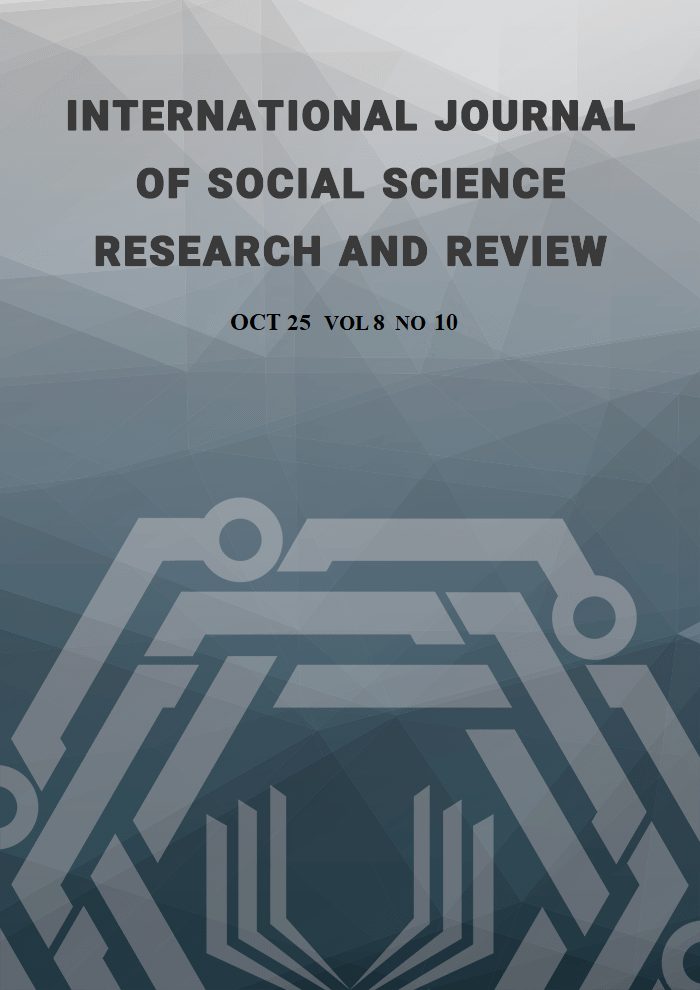The Relationship Between Technological Policy and Environmental Policy Making in the European Union
Abstract
The Fourth Industrial Revolution has made innovations faster, more efficient, and more accessible than ever before. Technology is also increasingly interconnected, as we witness the merging of the digital, physical, and biological realms. On the other hand, today's world faces threats that are becoming increasingly complex and significant. Environmental crises and environmental degradation can be considered one of these threats, and this threat can endanger human life. The European Union and its member states, realizing this issue, have been pursuing appropriate environmental planning since the 1960s. This article, using a descriptive and analytical method, seeks to explain how technological policies and environmental policies are related in the European Union. The results of this study show that to date, the technological programs and policies of the European Union have included the Lisbon Strategy, the Europe 2020 Strategy, the European Framework and Horizon 2020 Program, and the environmental programs and policies of the European Union have included the European Environmental Action Plan (resource efficiency, biodiversity, chemicals, waste, air, water, forests and soil), the European Green Deal, the circular economy, sustainable transport, clean energy transition and environmental operational programs. Finally, the link between technological and environmental policies in the EU represents a joint effort to create a more sustainable and resilient future, and these strategies work in tandem to facilitate sustainable economic and environmental development in the EU. It is noteworthy that the Russia-Ukraine war has prompted a review of the EU policy framework, leading to significant changes in its strategic priorities—a topic that will be discussed in detail in the following sections.
References
Brussels.(2019, December 11).CO (2019)640 final, 2.1.2. Supplying clean, affordable and secure energy.
Council of the European Union. (2022, March 29). Council adopts 8th environmental action programme [Press release]. Retrieved from https://www.consilium.europa.eu/en/press/press-releases/2022/03/29/council-adopts-8th-environmental-action-programme
Directorate General for Environment (European Commission). (2020). Chemicals Strategy for Sustainability: Towards a Toxic Free Environment (Publication No. KH 02 20 859 EN N; DOI 10.2779/221541). Publications Office of the European Union.
Directorate General for Environment (European Commission). (2020). Circular Economy Action Plan: For a cleaner and more competitive Europe (Publication No. KH 04 20 483 EN N; DOI 10.2779/085517). Publications Office of the European Union.
European Climate, Infrastructure and Environment Executive Agency. (2024). Horizon Europe Strategic Plan 2025–2027. Publications Office of the European Union. https://doi.org/10.2777/092911
European Commission. (2021). New EU Forest Strategy for 2030. Publications Office of the European Union. https://eur-lex.europa.eu/legal-content/EN/TXT/?uri=CELEX:52021DC0572
European Commission. (2022). Water quality and water management in the EU (European Environment Agency Report No. 12/2022). Publications Office of the European Union. https://environment.ec.europa.eu/topics/water/water-quality-and-water-management-eu_en
European Commission. (2023). Impact of the Russia Ukraine war on the EU’s energy security, innovation, and environmental policies. Retrieved from https://ec.europa.eu/info/publications/impact-russia-ukraine-war-eu-energy-security-innovation_en
European Environment Agency. (2023). Air quality in Europe — 2023 report (EEA Report No. 13/2023). https://www.eea.europa.eu/publications/air-quality-in-europe-2023
European Parliament. (2000). Lisbon European Council 23 and 24 March 2000: Presidency Conclusions. Official Document. https://www.europarl.europa.eu/summits/lis1_en.htm
European Parliament. (2020). European Green Deal Investment Plan (PE 649.371 – April 2020).
European Commission. (2018). COM (2018) 773. Brussels.
European Commission. (2019). COM (2019) 640 final. Brussels.
European Commission. (2020). COM (2020) 21 final. Brussels, January 14.
European Commission. (2022). Just Transition funding sources. Retrieved from https://www.europa.eu/info/strategy/priorities-2019-2024/european-green-deal/finance-and-green-deal/justtransition-mechanism/just-transition-funding-sources_en
European Commission. (2022). etc. europa.eu/commission/commissioners/2019 2024/timmermans en. Retrieved December 7, 2022
European Commission. (2014). Environment. Luxemburg: The European Commission.
European Commission. (2014). European Energy Security Strategy. Luxemburg: The European Commission.
Falkner, R. (2023). Weaponised energy and climate change: Assessing Europe’s response to the Ukraine war. LSE Public Policy Review. https://doi.org/10.31389/lseppr.78
Falk, M. (2009). High tech exports and economic growth in industrialized countries. Applied Economics Letters, 16(10). https://doi.org/10.1080/13504850701222228
Gardner, D. M., Johnson, F., Lee, M., & Wilkinson, I. (2000). A contingency approach to marketing high technology products. European Journal of Marketing, 34(9/10), 1053–1077.
Kim, J., & Yoo, J. (2019). Science and technology policy research in the EU: From Framework Programme to Horizon 2020. Social Sciences, 8(5). https://doi.org/10.3390/socsci8050153
Kok, W. (2004). Facing the challenge: The Lisbon Strategy for Growth and Employment. Report from the High Level Group. November. https://repositorioinstitucional.ceu.es/bitstream/10637/2481/1/Kok_W.pdf
Krastev, I., & Leonard, M. (2023). Fragile unity: Why Europeans are coming together on Ukraine (and what might drive them apart). ECFR Policy Briefs. Retrieved from https://ecfr.eu/publication/fragile-unity-why-europeans-arecoming-togethero ukraine/
Lawn, M. (2002). A European Research Area? European Educational Research Journal, 1(1).
Reuil, G., Cvijanović, V., Delera, M., & Diafas, I. (2024). Horizon Europe support for the European Green Deal. Publications Office of the European Union. https://doi.org/10.2861/683027
Shoukat, A., Ali, S., & Yaseen, M. (2023). The impact of the Russia Ukraine war on EU energy security. Social Sciences Spectrum, 9(1), 52–66. https://sss.org.pk/index.php/sss/article/view/177
Single European Act. (1987). OJ L 169, 29.6.1987, 1–28. Retrieved from https://eur-lex.europa.eu/legal-content/EN/TXT/?uri=celex%3A11986U%2FTXT
The World Bank. (2020). High-technology exports. Retrieved December 27, 2020, from https://tcdata360.worldbank.org/indicators/TX.VAL.TECH.MF.ZS?country=BRA&indicator=2010&vis=line_chart&years=2007,2018

This work is licensed under a Creative Commons Attribution-NonCommercial-NoDerivatives 4.0 International License.
Copyright for this article is retained by the author(s), with first publication rights granted to the journal. This is an open-access article distributed under the terms and conditions of the Creative Commons Attribution license (https://creativecommons.org/licenses/by-nc-nd/4.0/).





